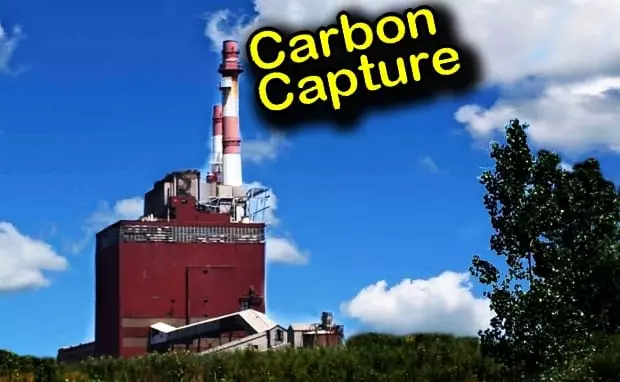From the mid-20th century, mankind started to realise the great impact of our industrial activities on the environment. The relationship between industrialization and environmental degradation is one that is hard to ignore. In as much as mankind needs to grow industrially and economically, we also need to preserve our resources and the environment in general. As a result, the past few decades have seen great strides in the reduction of pollution and improvement in energy efficiency.

One of the main areas of focus has been on coal power plants. Coal is a major source of energy especially in the production of electricity. In the same way, coal is a major cause of air pollution due to the high carbon content. It is no surprise therefore that researchers have come up with great ways to reduce pollution from these coal plants. One of the most important ways of reducing pollution from coal plants is by capturing the pollutants.
Ways That Are Used To Reduce Pollution In Coal Power Plants
Coal power plants produce a lot of pollutants into the environment. However, the most common are carbon monoxide and carbon dioxide. Carbon monoxide is a highly poisonous gas and can bring about fatalities very fast. Carbon dioxide, on the other hand, is responsible for bringing about global warming due to the greenhouse effect that happens once the carbon is released into the atmosphere.
Due to the high pollution brought about by the carbon compounds, one of the main ways to reduce pollution in coal power plants is carbon capture. As the name suggests, this is a method that is used to capture the carbon and dispose of it in an environmentally friendly way. Carbon capture involves collecting, transporting and then burying the carbon compounds so that they cannot escape into the atmosphere and bring about climate change. Research shows that this method has the capacity to reduce carbon emissions from coal plants by up to 90%. The process is however very expensive and energy consuming. It is estimated that it could use up to 40% of a power stations energy use. Currently, the number of high-efficiency low emission coal power stations that apply this method is increasing.
There are 3 main ways of carbon capture. These are:
1. Post-combustion method
Flue gas a combination of all the gases emitted by a factory of a power plant. In this method, the carbon is separated from the flue gas by passing the flue gas through a column filled with a liquid solvent that preferentially takes out the carbon. An example of such a solvent would be ammonia.
The flue gas is then released into the atmosphere without the carbon compounds. To remove the carbon that has been captured by the liquid solvent, a stream of hot steam is passed through the absorber column and the carbon is released as carbon dioxide which can then be collected and transported for disposing.
2. Using oxyfuels
When coal or any other fossil fuel is burnt under normal conditions, the amount of carbon dioxide produced is about 10% of the waste gas. An ingenious idea that has been brought about is to burn the fossil fuel in pure oxygen. When this is done, almost all the waste will be made up of carbon dioxide and water vapour.
The water vapour is then condensed while the carbon is transported to other facilities or for disposal. One benefit is that the carbon dioxide can be used for other industrial purposes.
3. Pre-combustion method
This method involves a process called coal gasification. The coal undergoes gasification to produce carbon monoxide and hydrogen. The carbon monoxide is then reacted with water producing carbon dioxide and hydrogen. Unlike other methods, the hydrogen gas is what is used to generate electricity and as a source of energy.
The main disadvantage is that for this method, a new power plant must be made, unlike the other two methods which can be applied to the old coal power plants.
Other Methods Used To Reduce Pollution From Coal Power Plants
Fuel switching is used to replace the coal with less polluting fuels. Natural gas can be used but it is significantly more expensive than coal. One idea has been to use biofuels which are less harmful to the atmosphere and at the same time renewable.
Improving the energy efficiency of coal power plants is another way. The thought behind this is that if we can produce more energy from coal plants using the same amount of resources, then we will reduce pollution by the same amount as we increase the efficiency of the coal power plant.
Other Applications
Other than in coal power plants, carbon capture is used in other factories such as cement factories. The carbon is captured to reduce the amount of greenhouse gases being released into the atmosphere.
Although on a smaller scale and with slightly different principles, some vehicle exhausts are fitted with chemicals that reduce the amount of carbon being emitted by converting the carbon into less harmful compounds.
Conclusion
With coal being highly pollutant, the carbon capture method is a really useful and viable way to continue producing cheap energy while at the same time reducing the amount of environmental pollution.
To learn more about industrial air pollution clean up, check out IQSDirectory.com.
Editor: I hope you enjoyed this guest article written by John From IQSDirectory.













